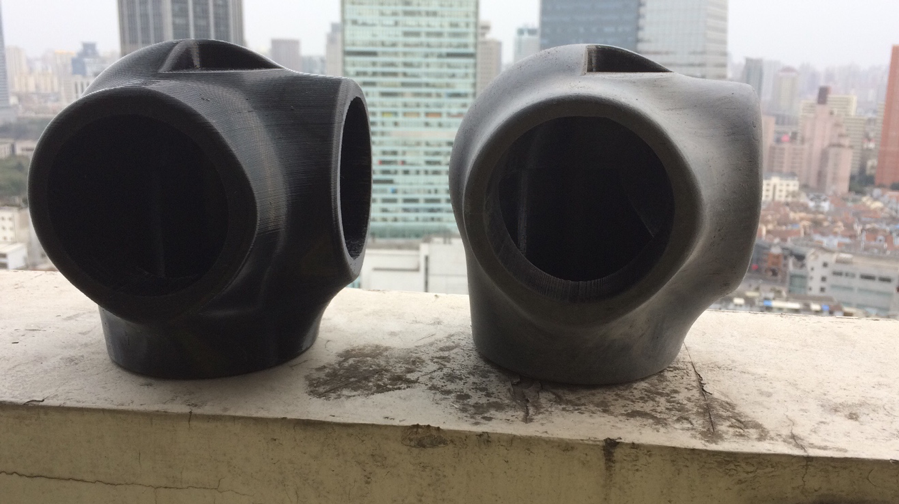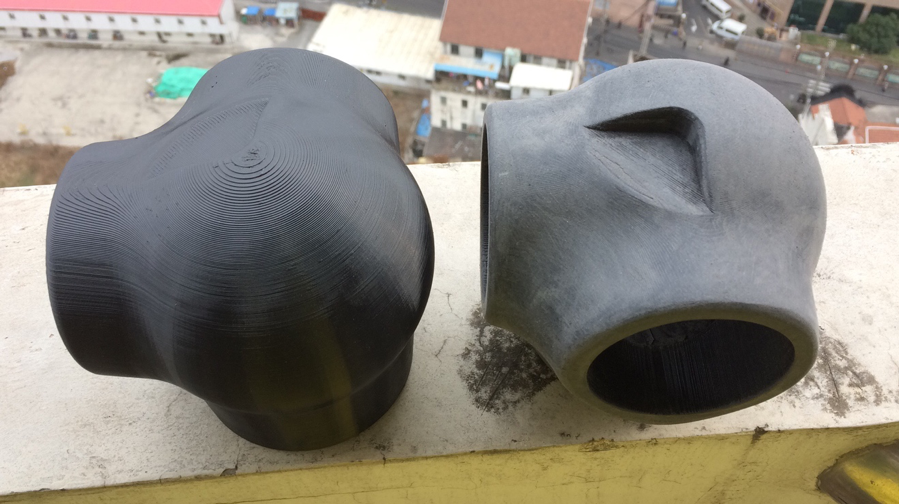POST-PROCESSING
SANDING
Extrusion based 3D printing is a kind of widely used and cost-effective 3D printing technology. However, layer lines are inevitable on the prints, which are generally undesirable when finishing a printed part. Post processing is needed if a smooth surface is required. Sanding is highly recommended as a good method to eliminate the layer lines bit it can be labor intensive and requires a good amount skill and experience to achieve a good quality finish. In addition to that, if there are support marks or other defects on the print surface, sanding can also remove these blemishes.
A common sanding process consists of using sandpaper to remove material from the highpoints of your printed part. Once all the high points have been removed you will be left with a flat model suitable for the next stage of post processing. This stage should not be rushed, as trying to save time by building heavy layers of paint is usually a fruitless task. Here are some hand sanding tips that can save time:
- If you plan to sand the print, it would be better to print at least 3 perimeters/shells or create a minimum wall thickness of 1.2mm. Any wall under this thickness will need a much higher level of care and attention.
- Start with coarse sandpaper and end with high grit sandpaper. But it is necessary to take the size and shape of the print into consideration. Depending on what surface quality you are expecting. If you are planning to paint the part, then 240grit sandpaper is sufficient and will also create a nice key for the paint to bond to the polycarbonate.
- For removing layer lines a coarse grit such as 80grit will do a good job at removing the material. Follow the 80grit with a 120, and finish with a 240grit prior to painting.
- If you do not plan on painting the surface, polycarbonate can be sanded to a very nice matte finish, this will require a higher grit of sandpaper up to 600.
- It is wise to sand in small circular motions and use a high density foam block to back the sandpaper. The pressure can be evened through the foam to create a smoother surface.
- Water should also be used in the sanding process. It helps to dissipate the heat from the sanding. It also contributes to keep the sandpaper clean and prevent the dust.
- The friction caused by sanding can generate a lot of heat and in some cases reach the Tg of the material, using water will help keep the temperature down.
- Always put on a face mask during sanding process. It will help prevent breathe in dust caused by sanding.
Sanding can produce very smooth surface, mimicking the standard set by injection molding. What consumers expect of a plastic part is a smooth glossy surface and sanding is a vital post processing step when creating 3D printed parts.


